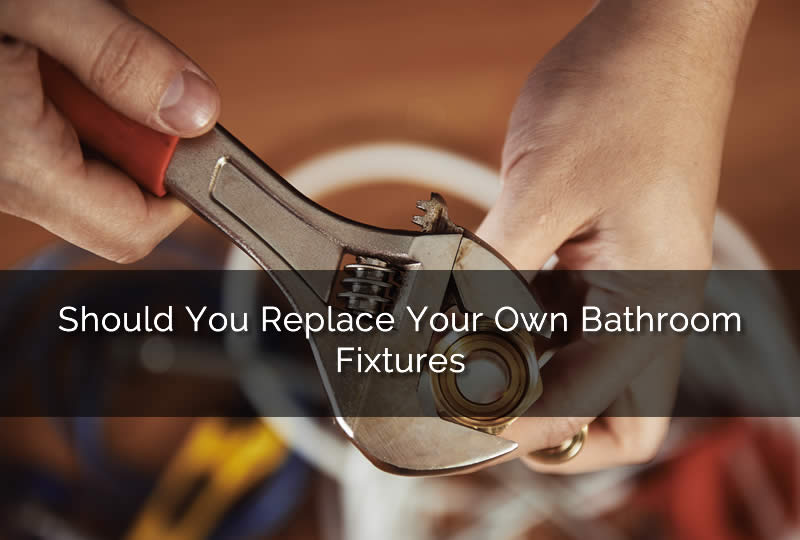Updating the look of your home’s bathroom can easily be done by simply replacing the fixtures that are located in your home’s bathroom. Unfortunately, not all of these fixtures are a simple to replace and sometimes you’ll need to hire a professional plumber or home improvement contractor in order to properly replace the fixture. In this article I’ll look at some of the ways that you can replace your own bathroom fixtures and which ones you’ll need to hire a professional for.
Should You Replace Your Own Bathroom Fixtures?
One thing that you’ll need to consider when attempting a project such as replacing your home’s bathroom fixtures is that you can actually do more damage than good. There are things that can go wrong during the install and you may end up spending more money on repairs than the initial cost of hiring a professional plumber. With that being said here are some of the items that you may want to replace in your bathroom and some details about them.
There are things that can go wrong during the install and you may end up spending more money on repairs than the initial cost of hiring a professional plumber.
Replacing Vanity Faucets
Most homes are equipped with a valve that cuts off the water to each vanity faucet. These valves are commonly known as stops and it allows a home owner or plumber to stop the water from going to the faucet. Changing a bathroom faucet can be a simple project when your home is equipped with stops. There are some things that you’ll want to be aware of however. One of the biggest problems when home owners install their own faucets is they tighten the keeps on the faucet too much which can crack the sink. If the sink cracks it will also need to be replaced. Another problem is the faucet is too loose and moves when turning the handles which can scratch and damage the sink.

Replacing Shower Heads or Handles
Replacing a shower head is relatively one of the easiest projects to do in a bathroom. For most shower head installations you’ll simply need to remove the old shower head and then just screw the new shower head on the pipe. Massaging shower heads and wand type shower heads may include other components that will need to be mounted as well.
Also when you want to replace your own bathroom fixtures you may want to change the shower handles. For the shower handles there is usually just a set screw located in each handle or the handle may be secured by clips located on the backside of the handles. Not being familiar with the current shower handles you have could damage the valve of the shower and break. Many components in the shower valve are plastic and can break very easily.
Replacing Shower Valves
A major component of the plumbing in the bathroom that you’ll certainly need a plumber for is the shower valve. Most shower valves are mounted in such a way that it make accessing them without special tools or experience almost impossible. The risks of attempting to replace your home’s shower valve on your own can be huge. Depending on how the valves are mounted and where you may end up needing to replace your entire shower if it’s broken or damaged during the install.
Replacing Toilet Parts and Components
Replacing the toilet parts of your home’s toilet is a simple procedure. However, there can be problems with the fill level which can make your toilet use too much or too little water with each flush. This can cause the toilet not to flush properly in some cases and it may cause it to use too much water. Consider that your toilet will fill up thousands of times each year on how much water you could actually be wasting if the toilet is not adjusted properly.
When in Doubt Use a Professional Plumber
Hiring a plumber to help install your new bathroom components is usually the best idea. When you want to replace your own bathroom fixtures there are just too many things that can go wrong. The damage that can be done can cost thousands more than the original cost of the project. By hiring a professional plumber such as Downriver Plumbers you can get the fixtures installed professionally and without the risk of damaging your home.

